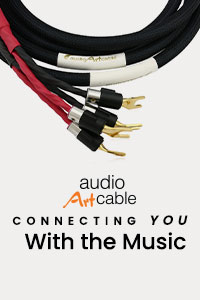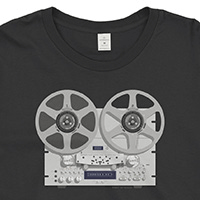Audio Research SP-3 preamplifier
Back in the mid 1970s, the idea that a preamplifier could provide “straight wire with gain” was an elusive goal. The idea that such perfection could be achieved from a valve model seemed even more unlikely. Yet when the $595 SP-3 preamplifier arrived on the scene in 1972, many audio reviewers proclaimed that such perfection was well within reach. The SP-3 wound up being one of ARC’s most popular products ever, and they sold thousands and thousands of them until the model was discontinued in 1976.
Until just a few years ago, you could buy an ARC SP-3 preamplifier in fairly good condition for $400 or $500. Unfortunately for bargain hunters, the legendary status of this all vacuum tube preamp has been revived and a unit in perfect working order with excellent cosmetics can now cost upwards of $1200 to $1400. Our SP-3, supplied by Kurt Doslu at Echo Hi-Fi in Portland, had been recently serviced by Audio Research and was a particularly pristine example. The cosmetics, however, were straight out of the ’70s—a boxy design with plenty of knobs and plastic buttons. (Compare this to the solid-state SP-4, which still looks like it could be part of the current lineup.) The six 12AX7s and 2 12AX7 LN tubes, easily spotted through the top mesh plate of the case, also seem a little strange in comparison to modern designs that feature only three or four valves at most.
I plugged this 35-year-old into a fairly heady system including the Conrad-Johnson Premier 350 power amplifier, Harbeth Monitor 40.1 loudspeakers and the new McIntosh MCD500 CD/SACD player. My goal was to investigate those lofty old claims of near-perfection to see how much the bar has moved in the last 35 years. Surprisingly, it hasn’t moved as far as you might think – we were all impressed at how good this preamp sounds.
The first thing I noticed about the SP-3 was how quiet it was. When I’ve dealt with vintage amps and preamps in the past, there’s always a bit of noise that reminds you that you’re listening to something old, something tubed. This wasn’t the case with the SP-3. I was genuinely amazed at the utter silence, even with the volume knob turned way up. Once I started playing music, I was instantly treated to a warm, wet and slightly liquid presentation. While this sounds like a more typical description of vintage tube amp sound, I also noticed no loss of resolution and detail. In many ways, the SP-3 sounded very close to some of the finer contemporary tube preamps I’ve had in my system over the last couple of years.
I played a wide variety of musical selections with the SP-3 including Holly Cole, Thom Yorke, Primus and Midori. I even pulled out the soundtrack of Born on the Fourth of July, the one John Williams score that doesn’t overwhelm me with that Spielberg-like sense of false wonder and awe. The SP-3 excelled at spreading the string orchestra out in a panoramic manner, letting me hear separate groups of instruments interact and support the main theme of the lone, plaintive trumpet. With intimate jazz and chamber music, the SP-3 provided all of the transient detail and tonal accuracy I’ve come to expect of the finest equipment available today.
 Where the SP-3 falls short (which you can probably surmise from my “intimate jazz and chamber music” comment) is in projecting deep, textured bass. The SP-3 ran out of juice when it came to delivering the lowest registers of Tony Levin’s Chapman Stick on the title track of Paula Cole’s This Fire. On “Black Swan” from Thom Yorke’s The Eraser, bass lines felt a little chunky and two-dimensional, especially when the volume was cranked up. Much of this information was successfully retrieved once I substituted a more modern and much more expensive preamplifier (our publisher’s Conrad-Johnson ACT 2/ Series 2) back into the system. Still, the SP3 was very impressive and highly musical at all times.
Where the SP-3 falls short (which you can probably surmise from my “intimate jazz and chamber music” comment) is in projecting deep, textured bass. The SP-3 ran out of juice when it came to delivering the lowest registers of Tony Levin’s Chapman Stick on the title track of Paula Cole’s This Fire. On “Black Swan” from Thom Yorke’s The Eraser, bass lines felt a little chunky and two-dimensional, especially when the volume was cranked up. Much of this information was successfully retrieved once I substituted a more modern and much more expensive preamplifier (our publisher’s Conrad-Johnson ACT 2/ Series 2) back into the system. Still, the SP3 was very impressive and highly musical at all times.
Still, I can’t think of a single preamplifier in the $1000 to $1500 range that offers such a natural, involving and seductive sound. In fact, there aren’t a lot of new preamplifiers in this price range anymore since most audiophiles start to consider integrated amps once they drift toward this price point. Even at an asking price that’s now two or three times its original cost, the SP-3 is still quite the bargain. It also speaks volumes about ARC quality that this particular unit is running as strong and as sure as the day it was made. With more and more audiophiles turning to Chinese products in order to save a few dollars, it makes much more sense to go with a proven winner like the SP-3. –Marc Phillips






